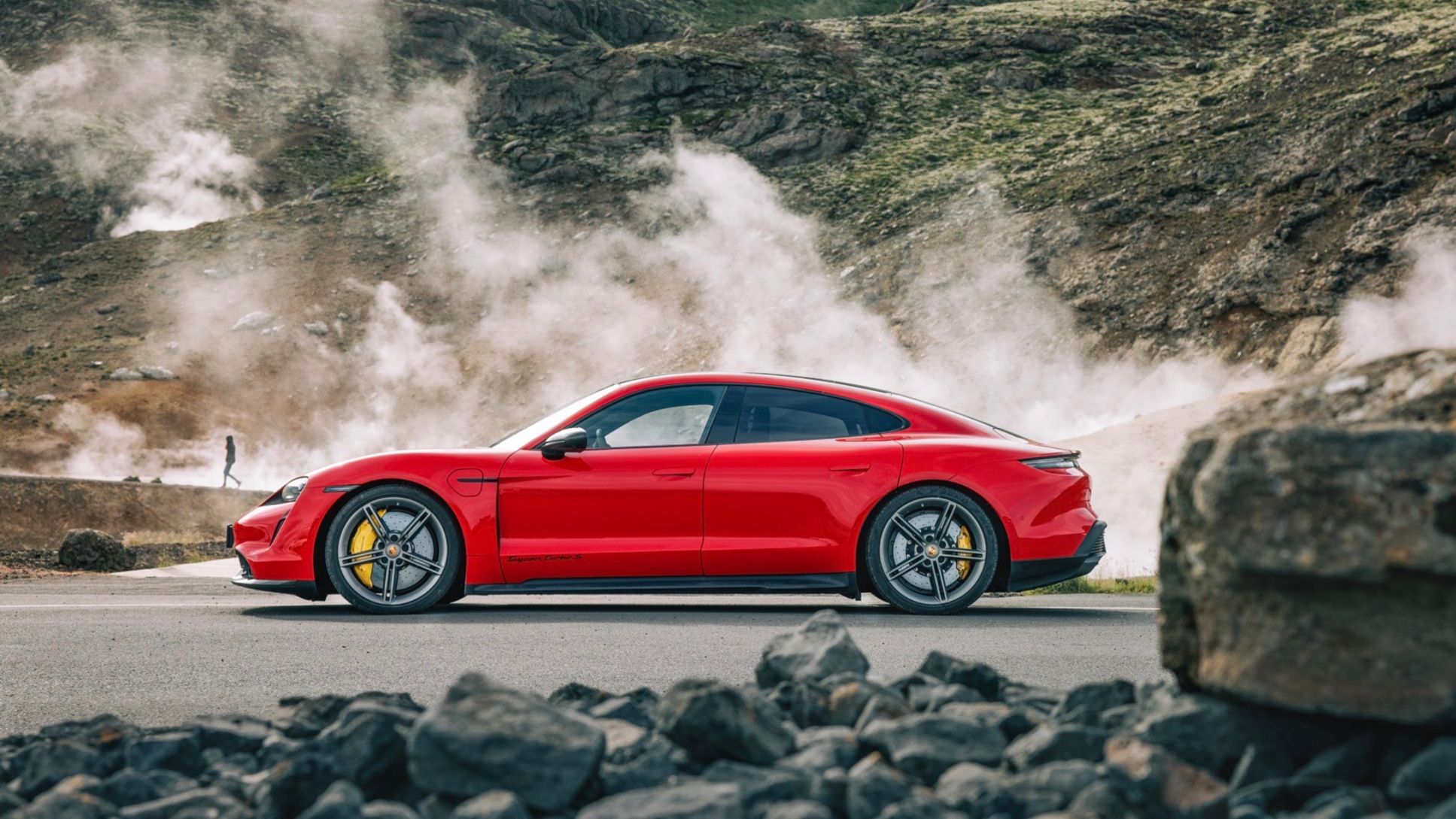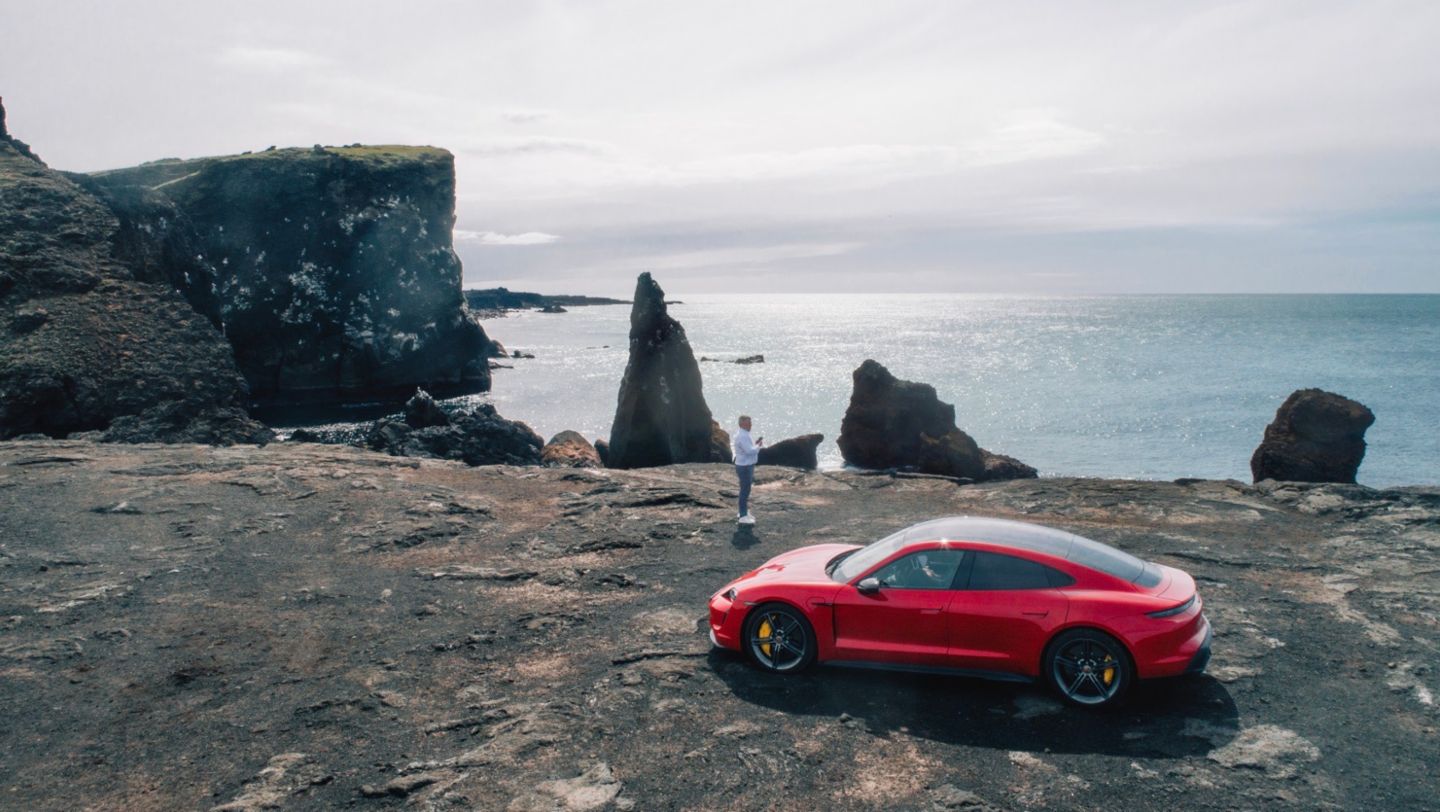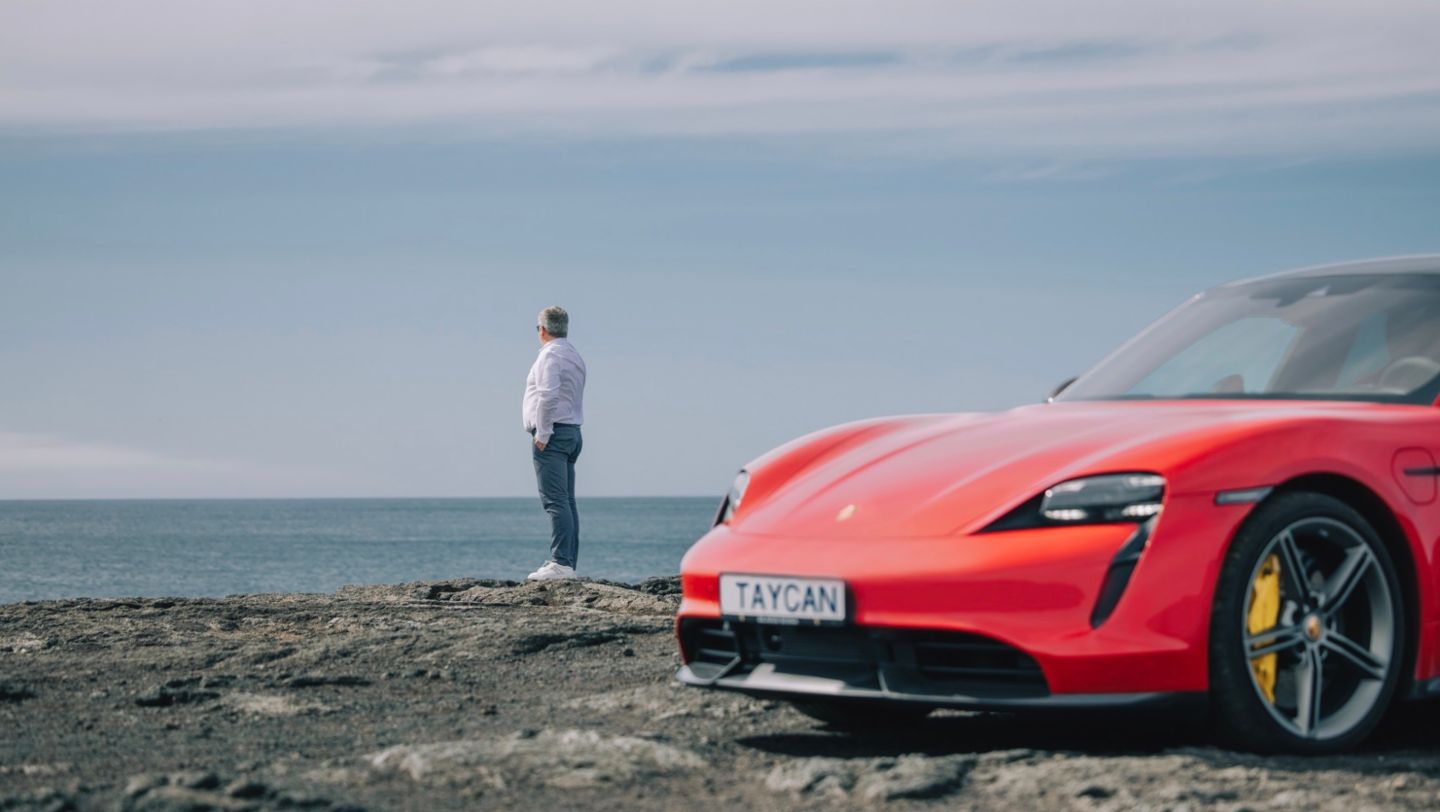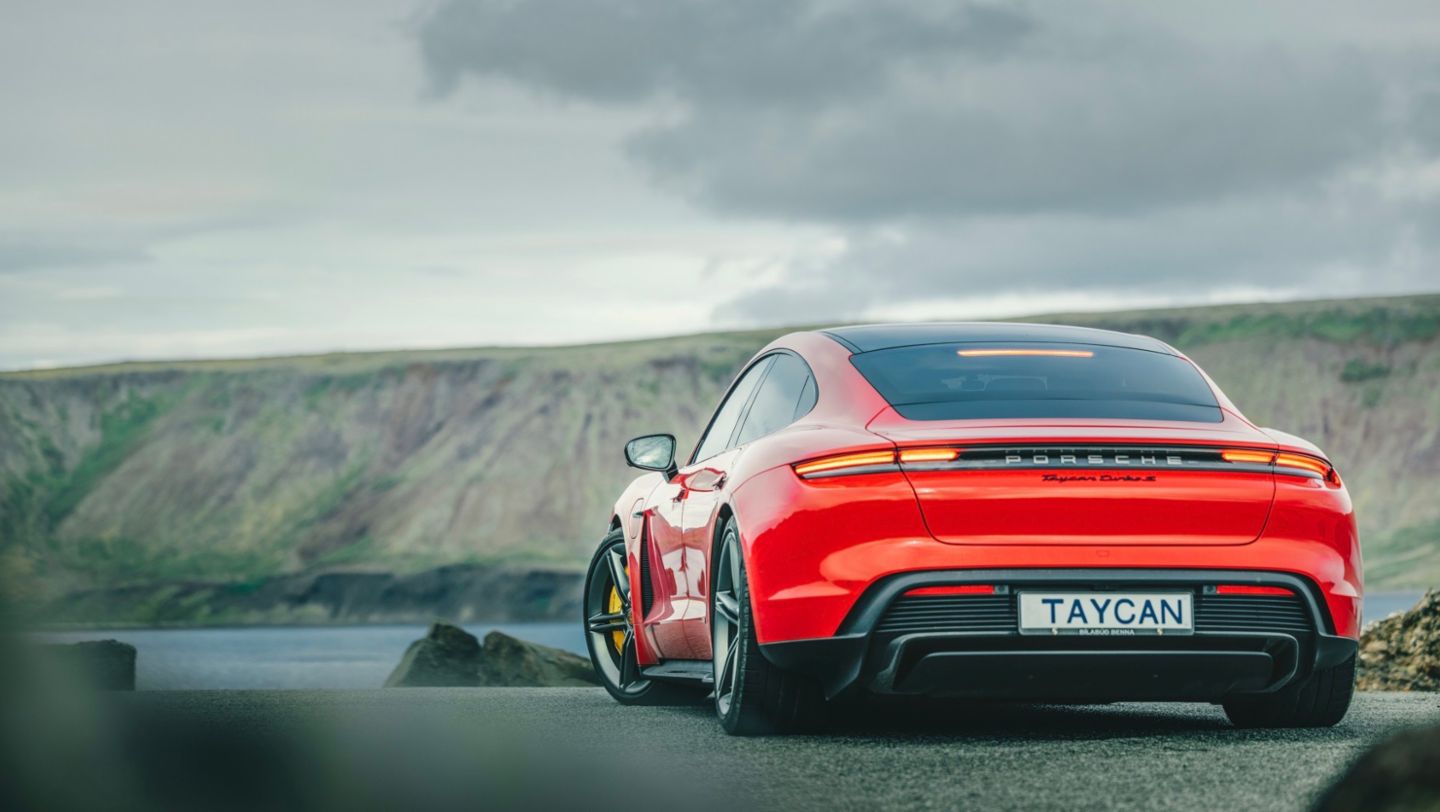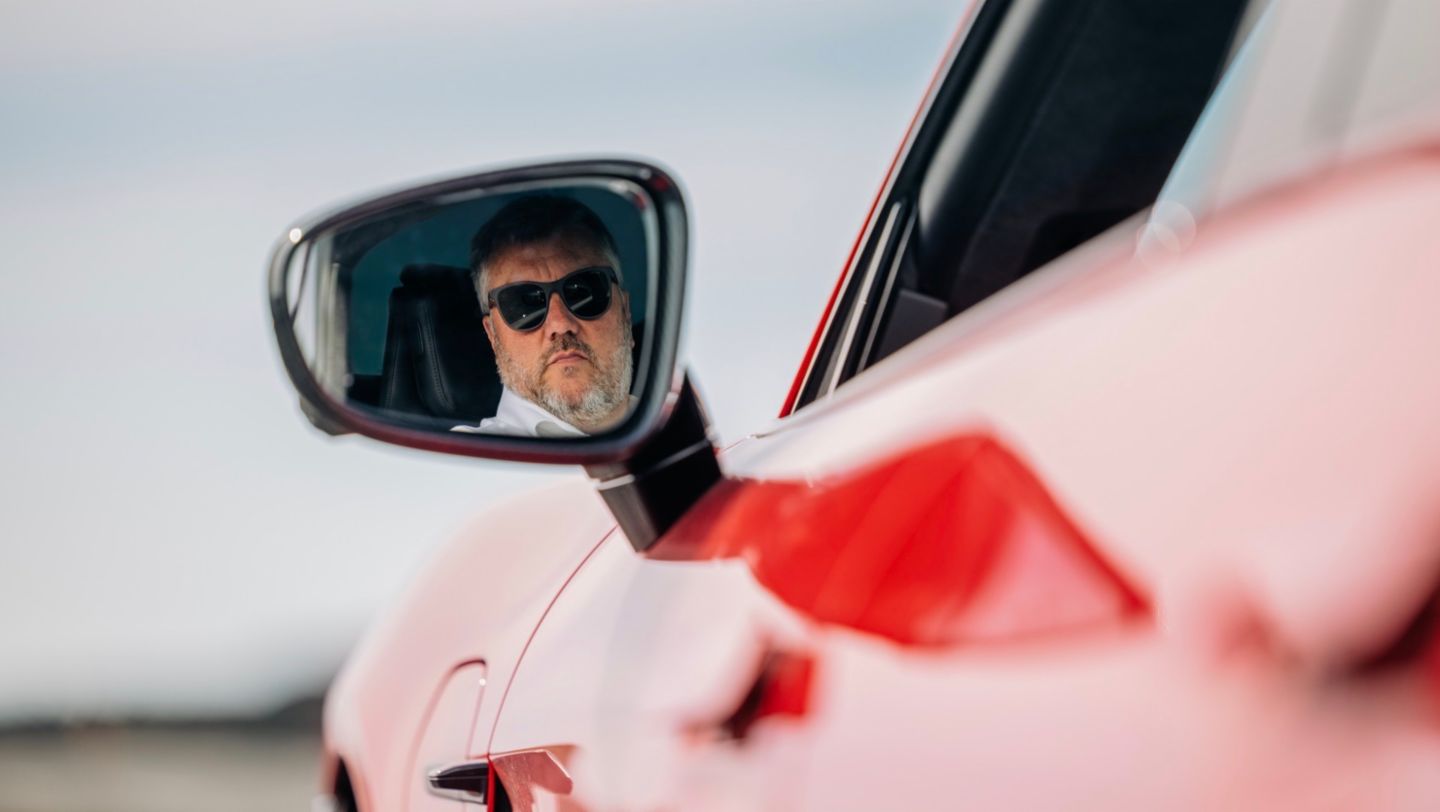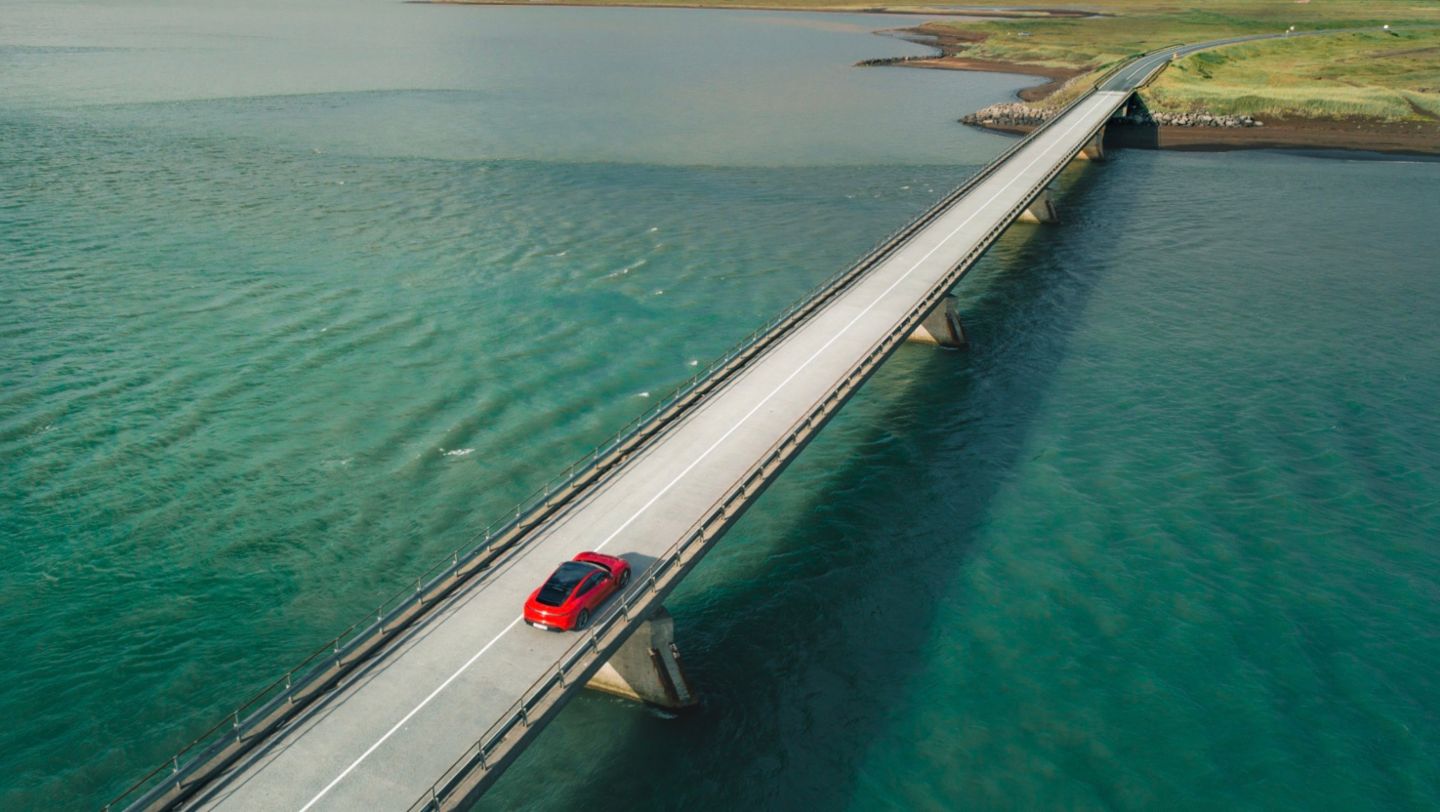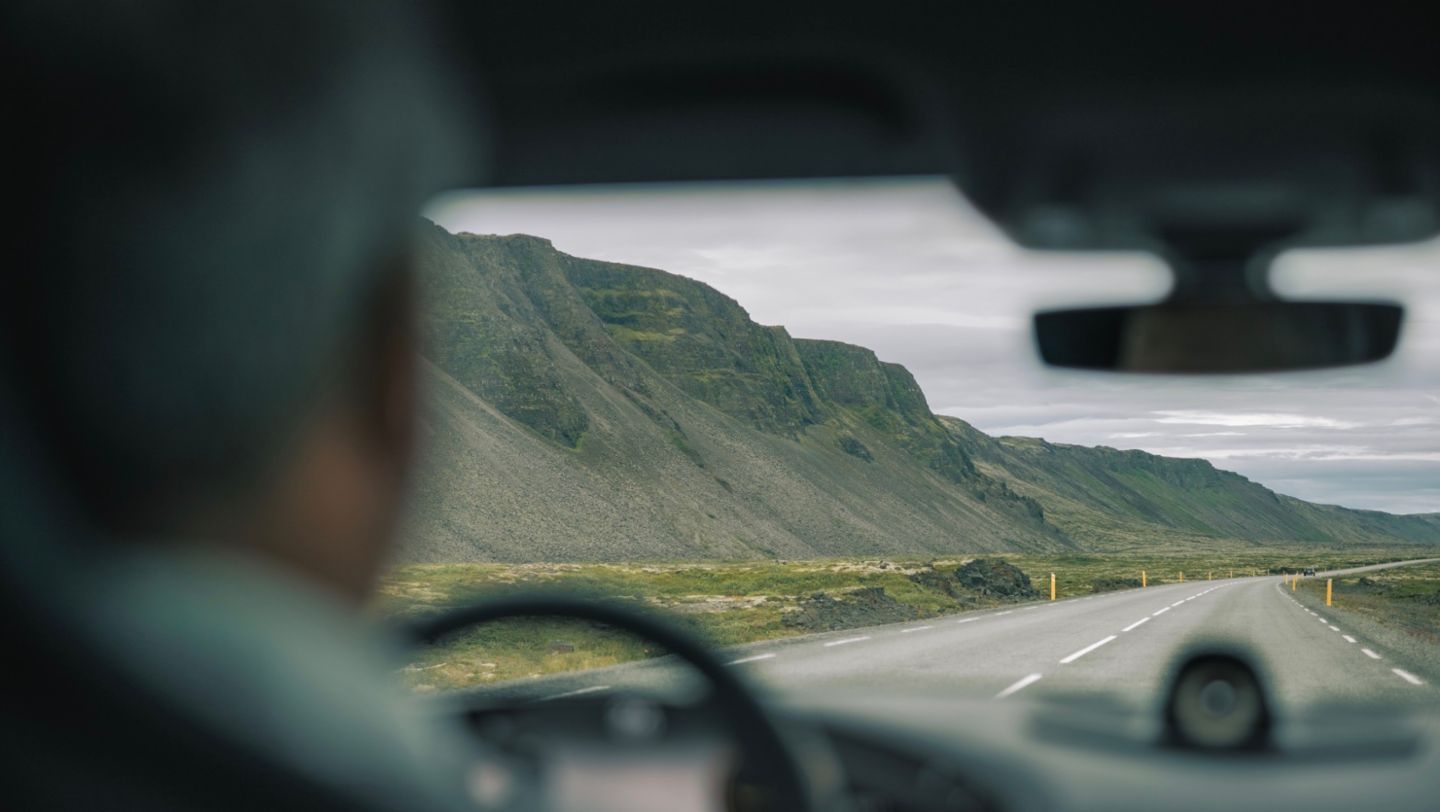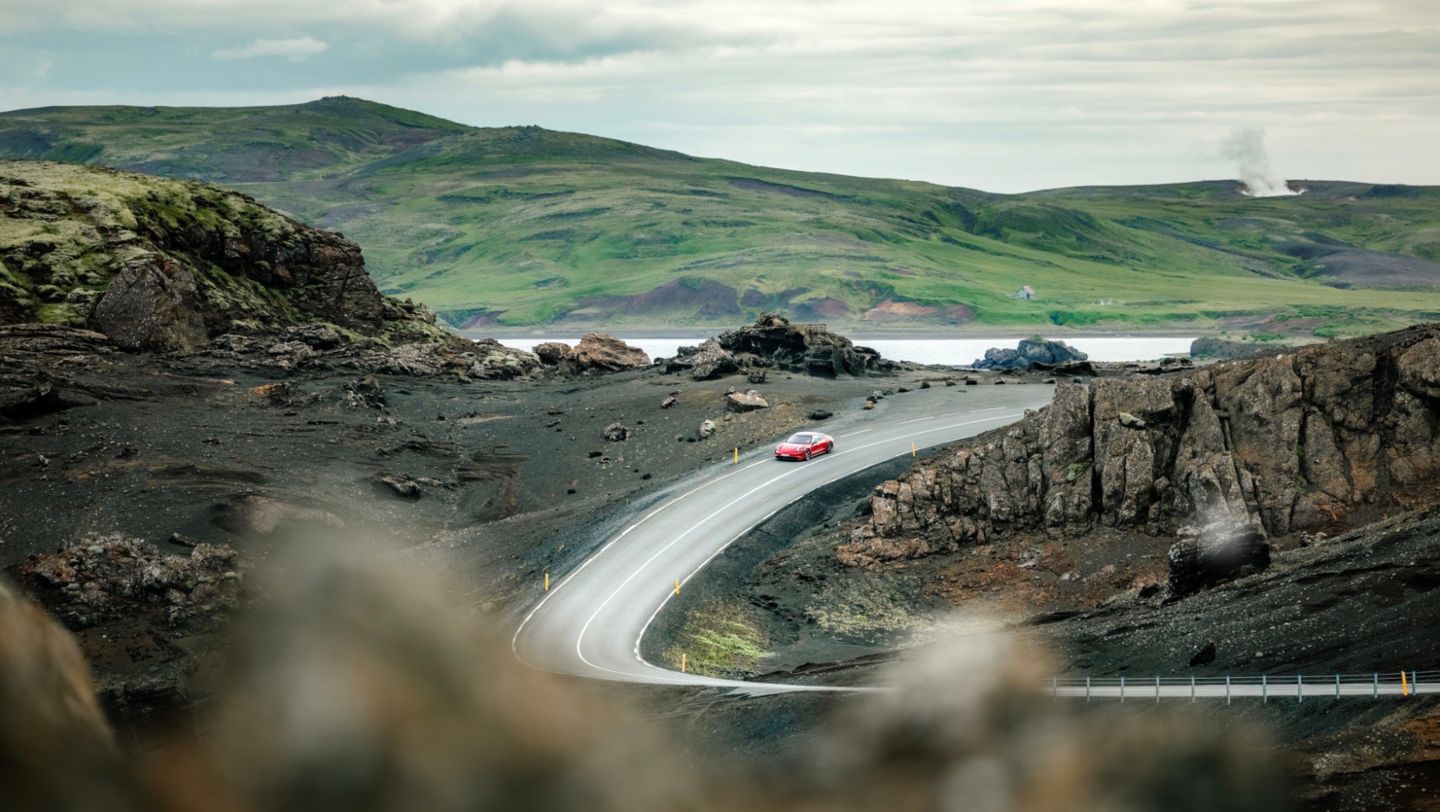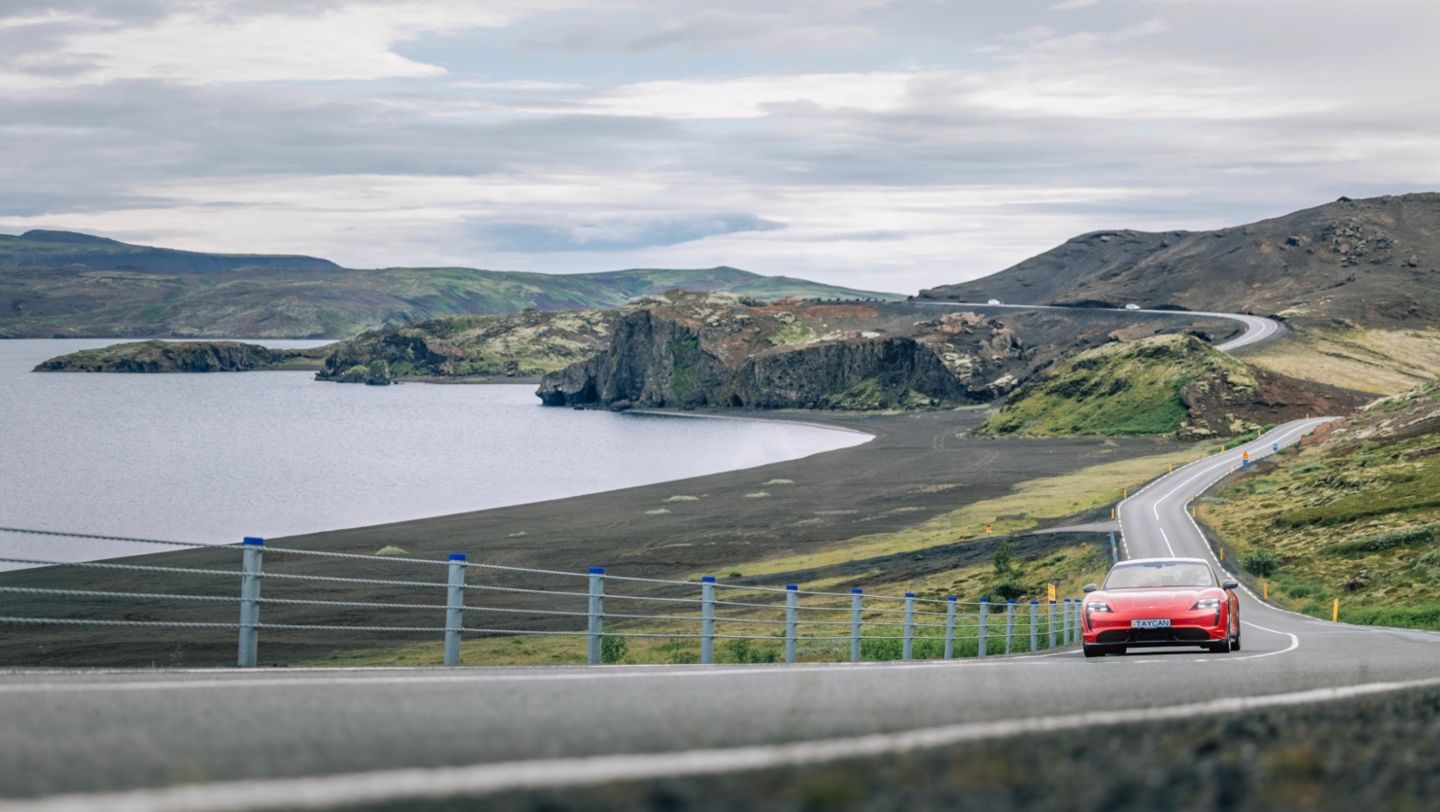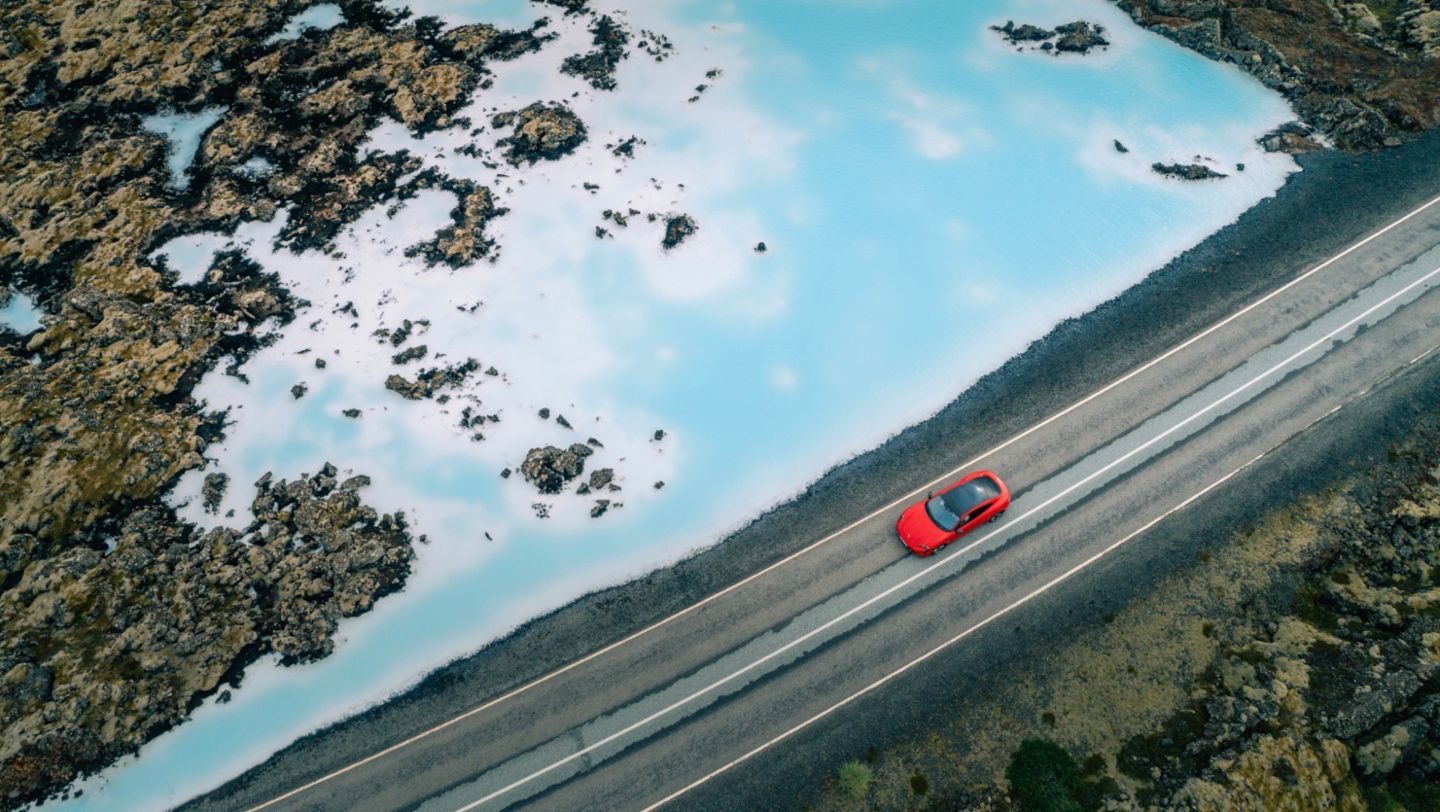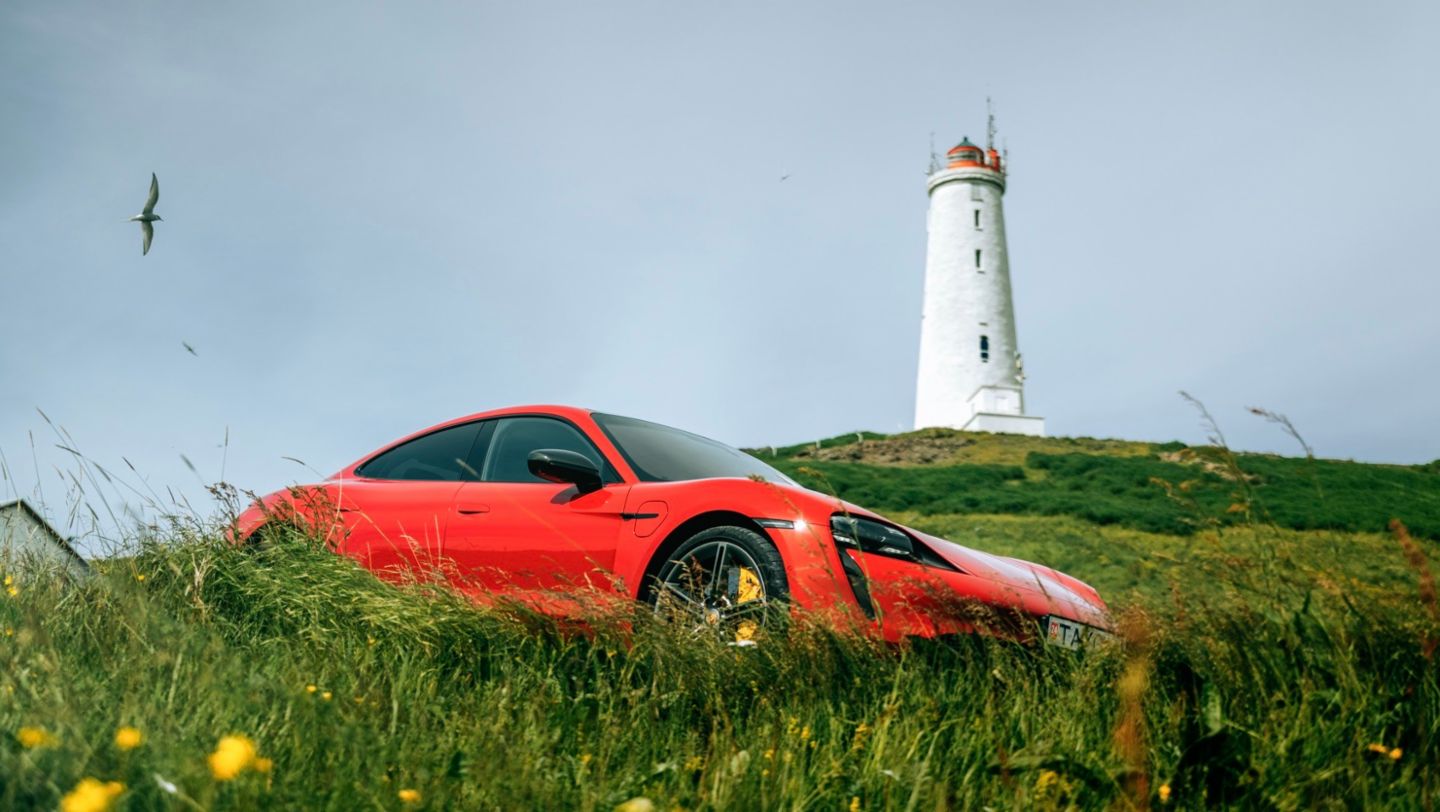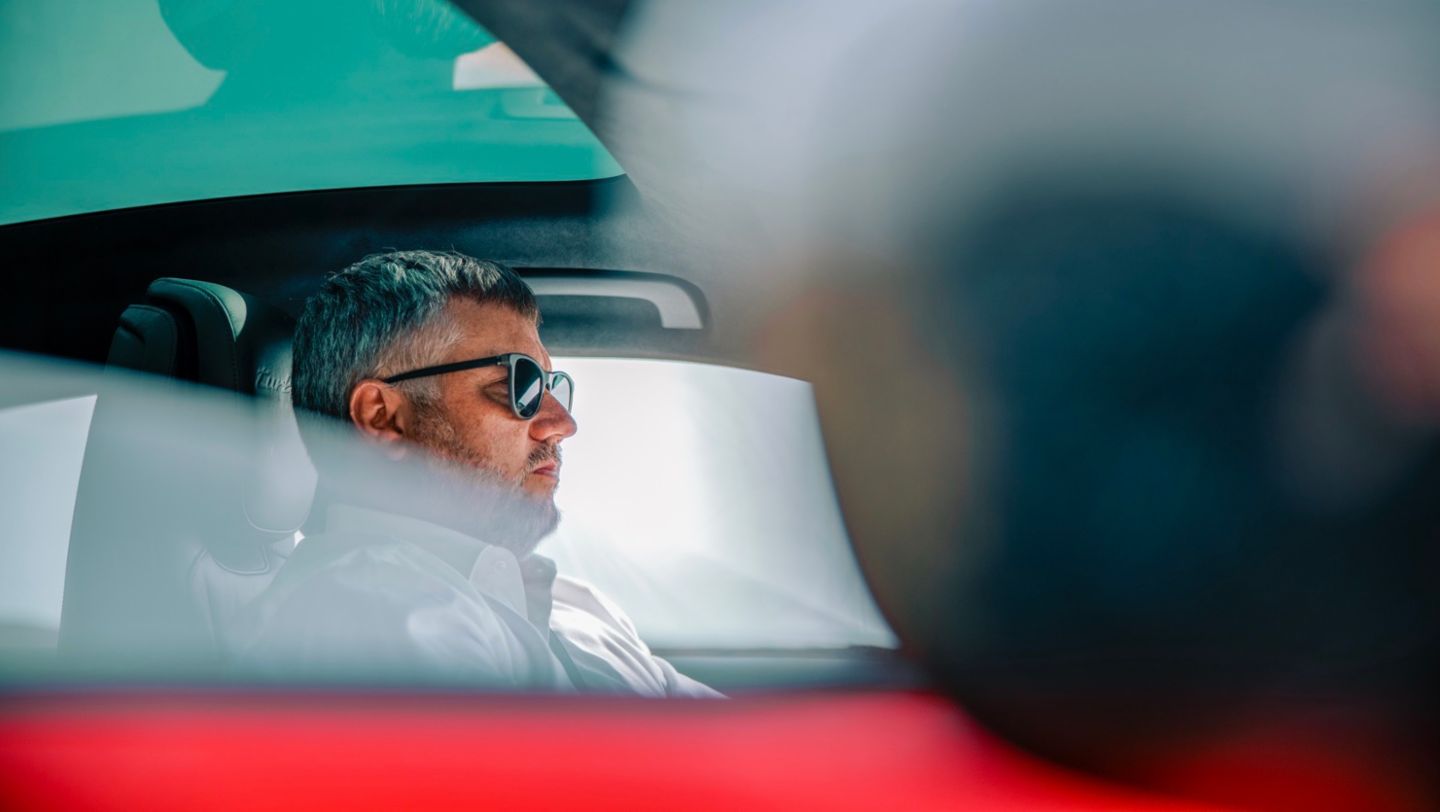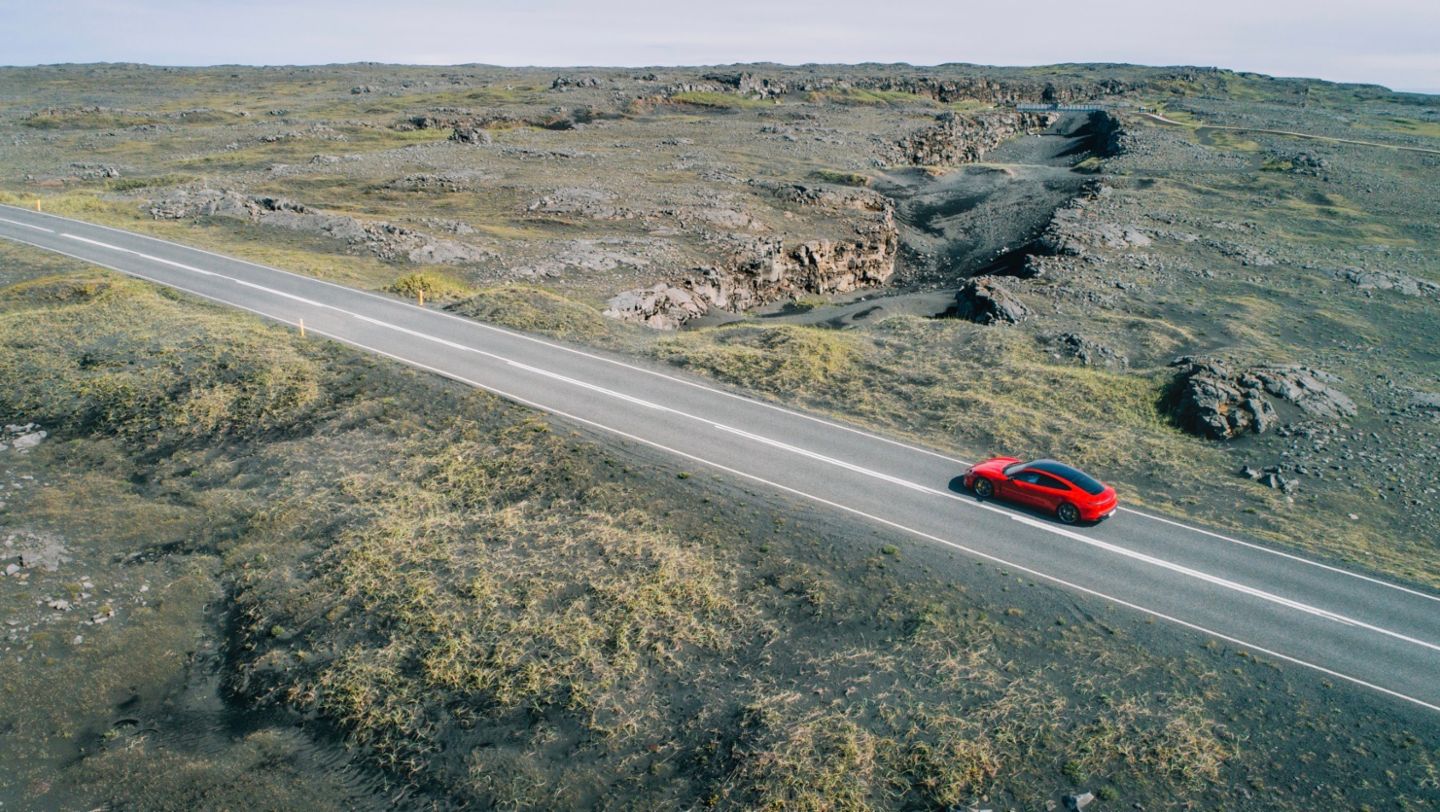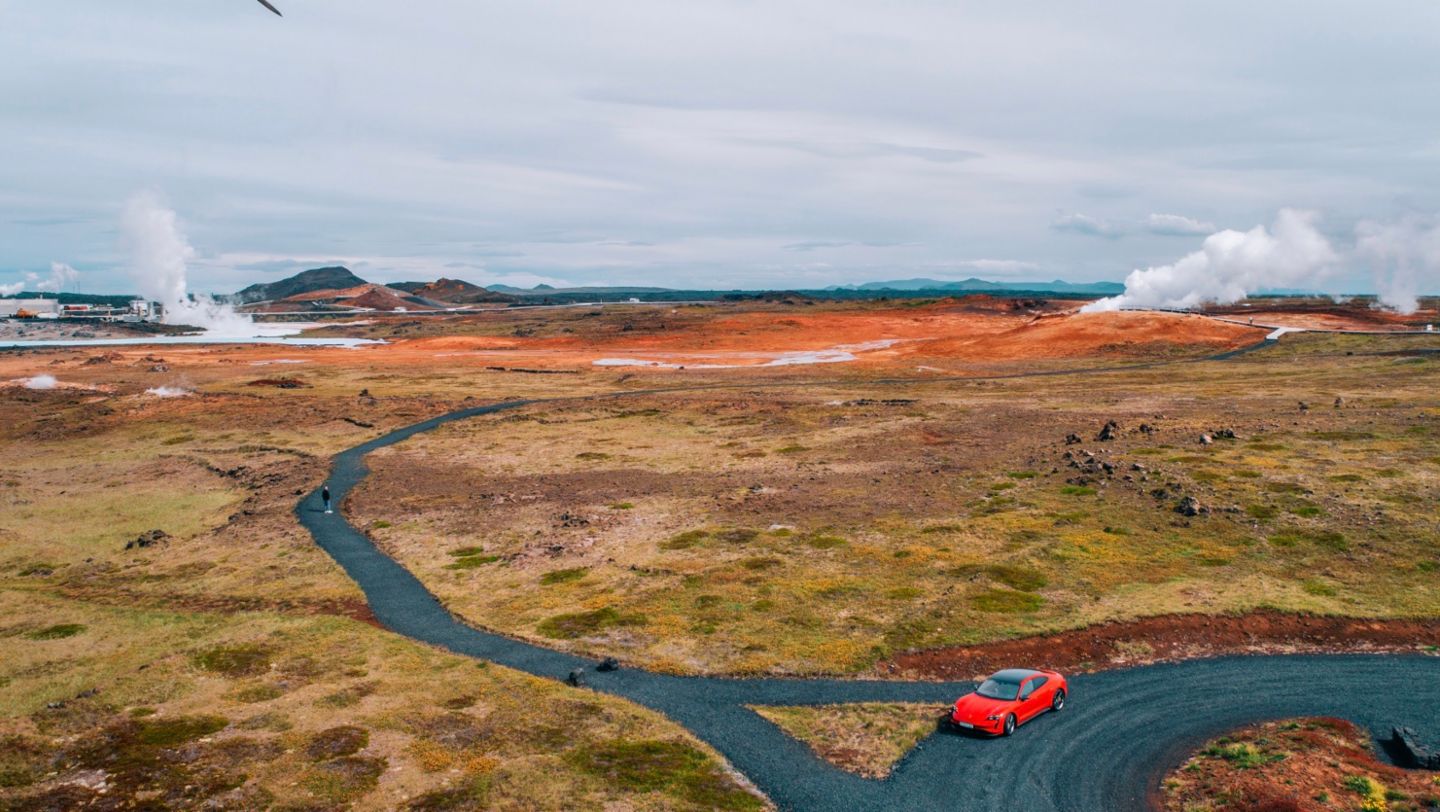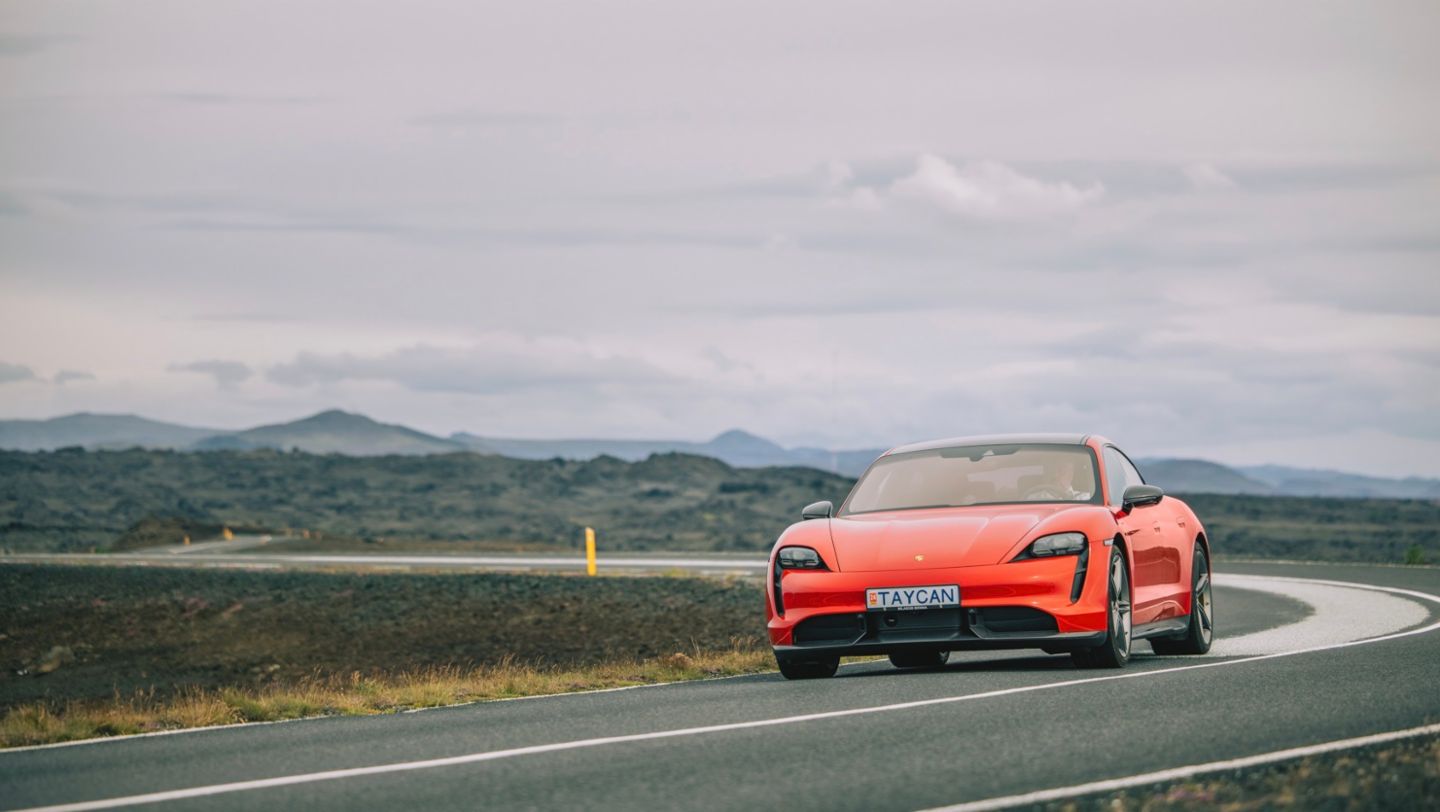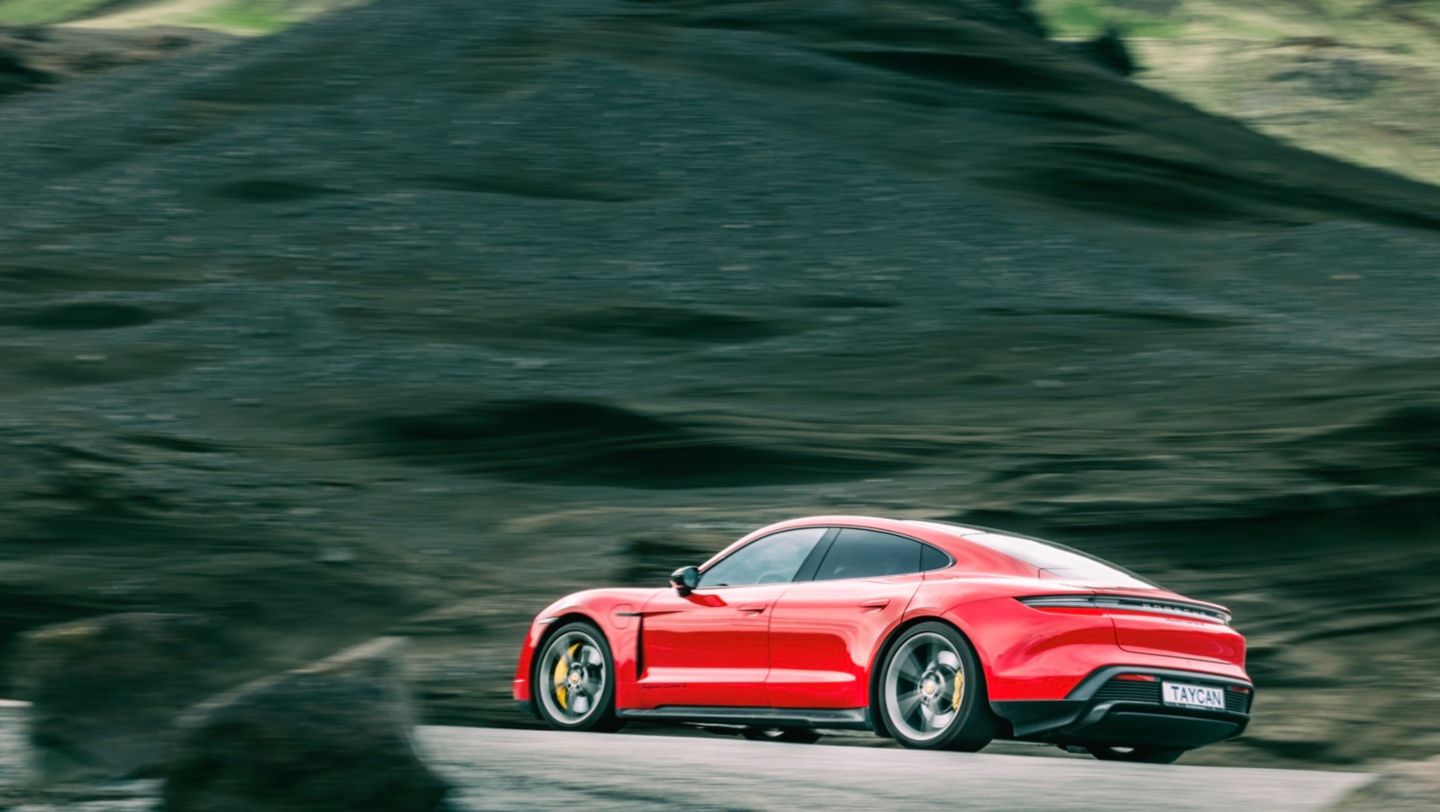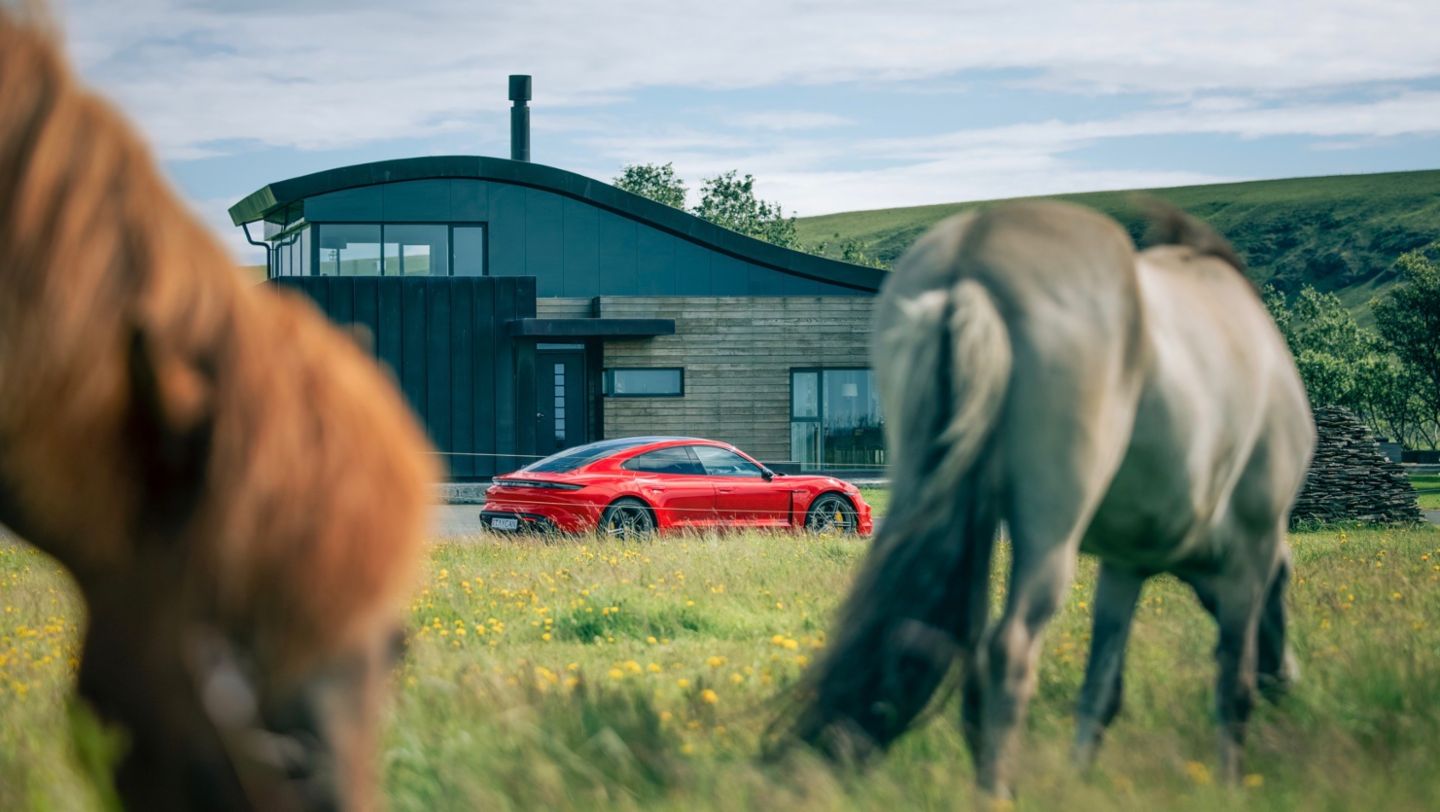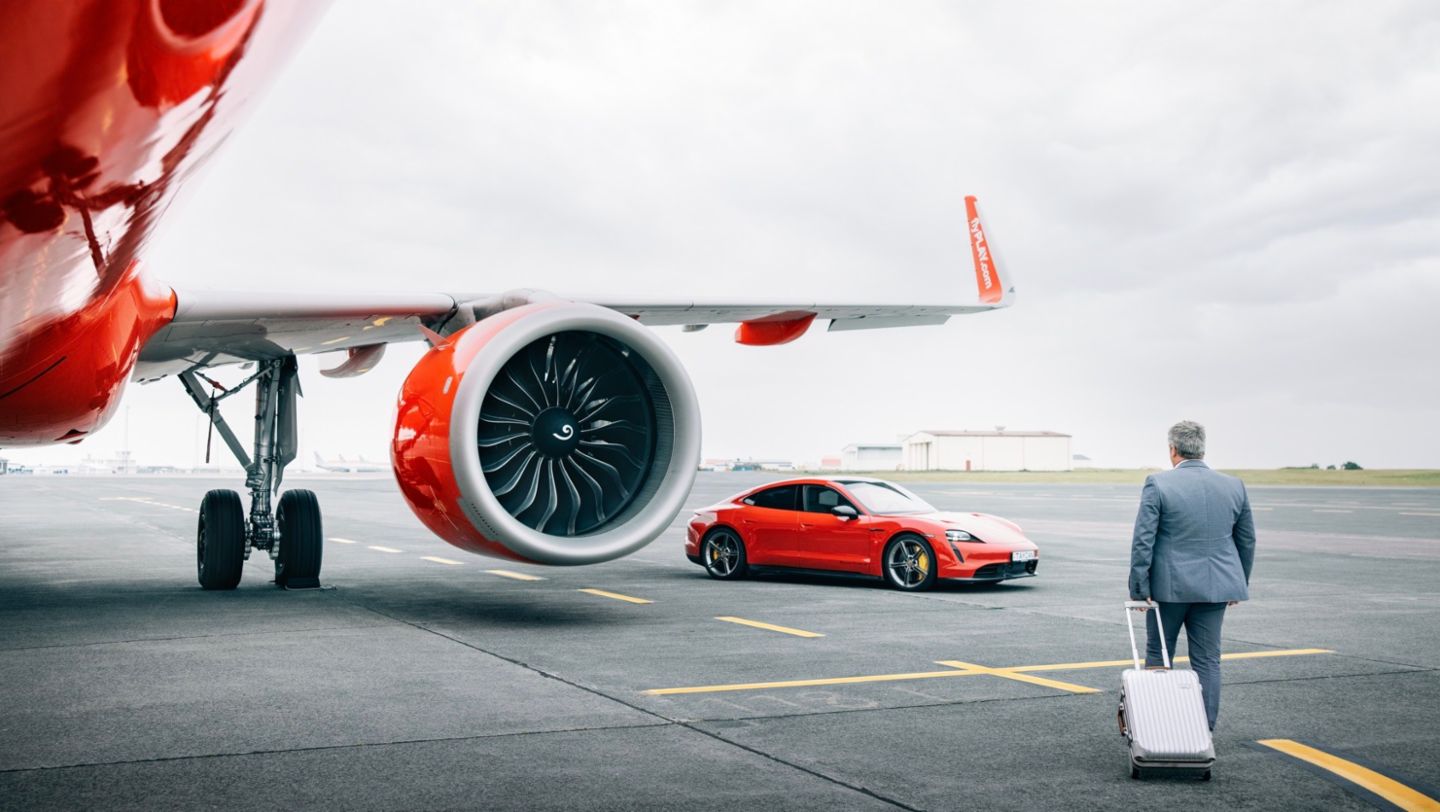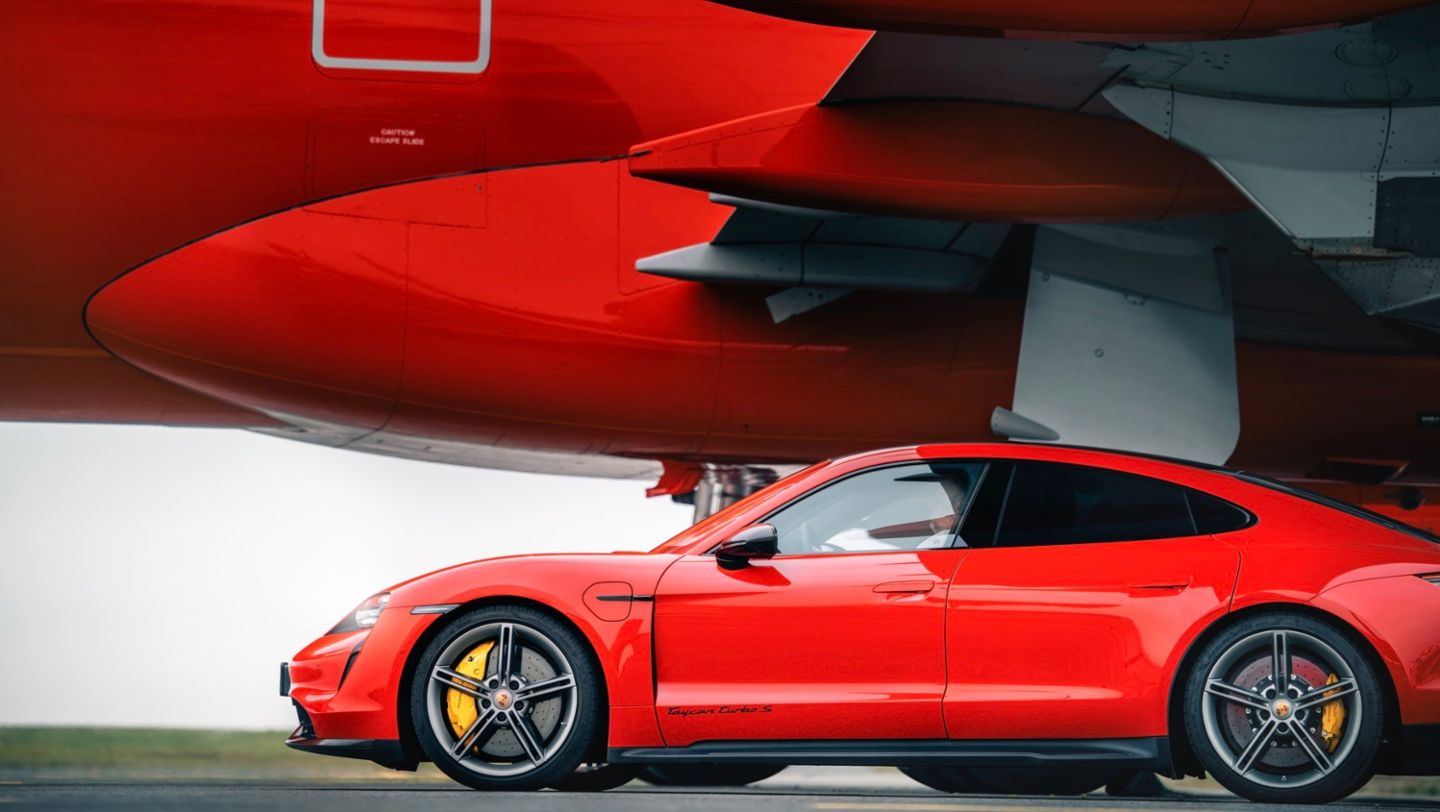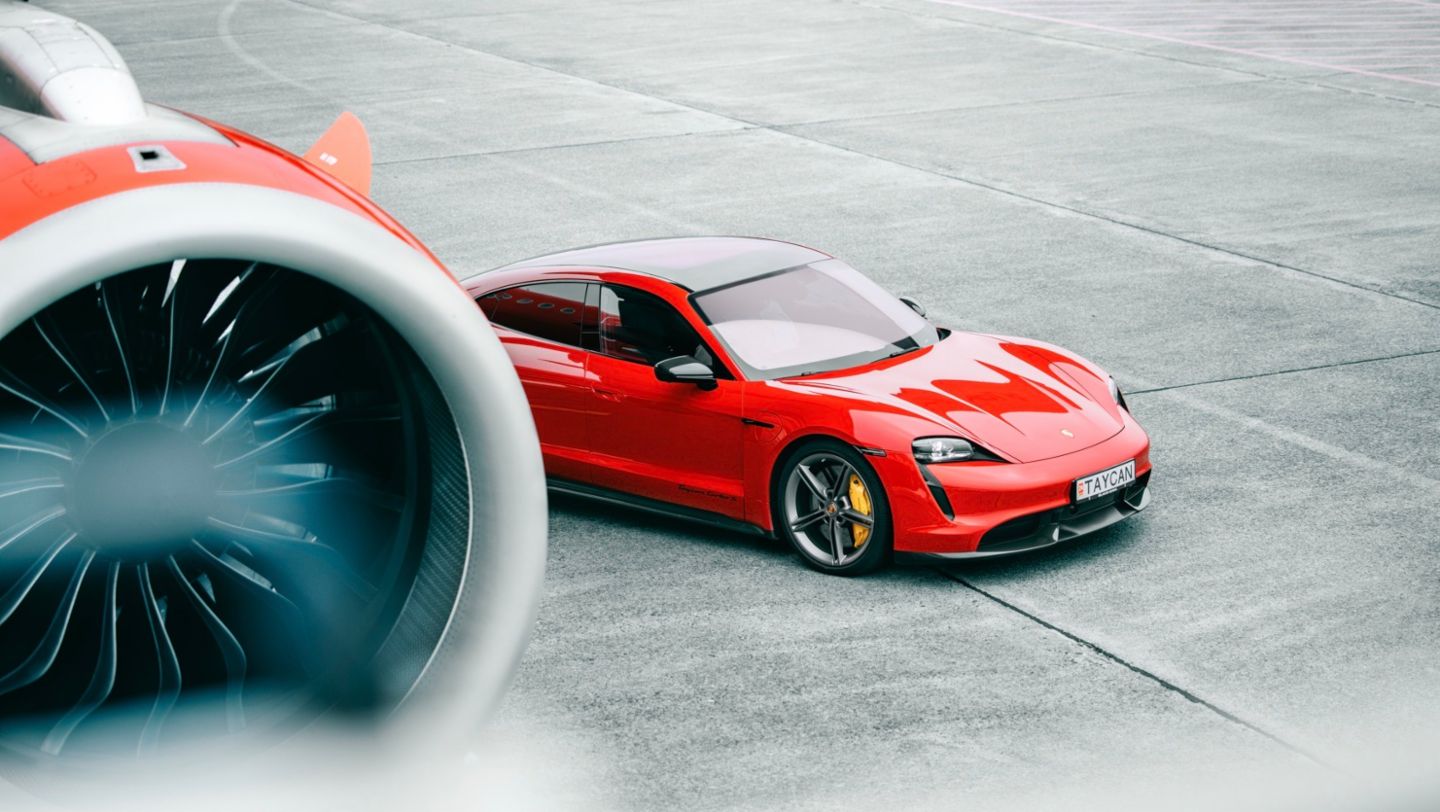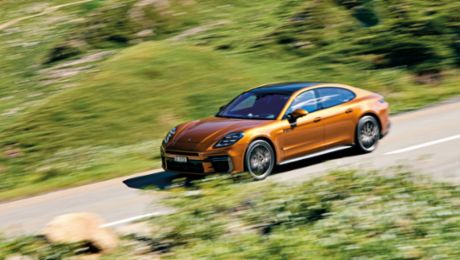Where:
Southern Peninsular Region, Iceland
Length:
180 kilometres
Type:
Empty straights and gentle bends along a wild coastal landscape, framed by the backdrop of active volcanoes and steaming hot springs
There are few people who can claim to know Porsche’s model history more intimately than Bjarni Elvar Pétursson. The Icelandic dentist fell for the marque as a wide-eyed teenager, and it has accompanied him through life ever since.
“It all started in 1985 when Porsche first came to Iceland,” says Pétursson from his clinic in Reykjavik. “I was 17 years old and close to getting my driving licence. They had a motor show in town with a 944 and a 911 on display. Around five years later, just after I graduated as a dentist, I managed to buy a used 944 and that was my first Porsche.”
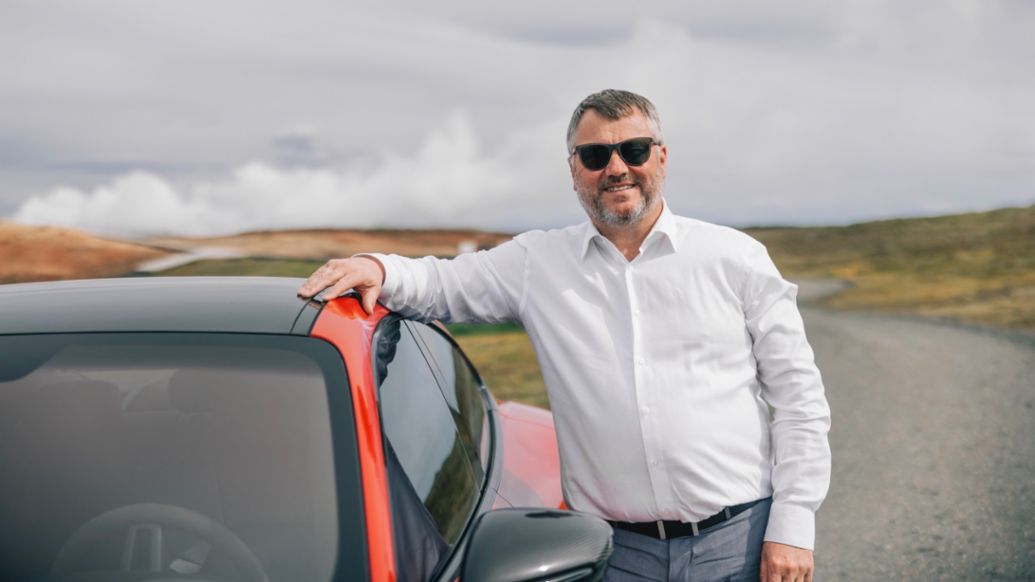
From there, Pétursson would go on to own one of the first generation Cayenne models in 2003, followed by a 911 Turbo, a Panamera and a Macan, and he has recently added to this impressively comprehensive list with a Taycan Turbo S – the very first example to arrive in Iceland. For the hard-working clinician, who is also a lecturing professor and head of the department of reconstructive dentistry in Iceland, this was the culmination of a long, and at times unknown, journey.
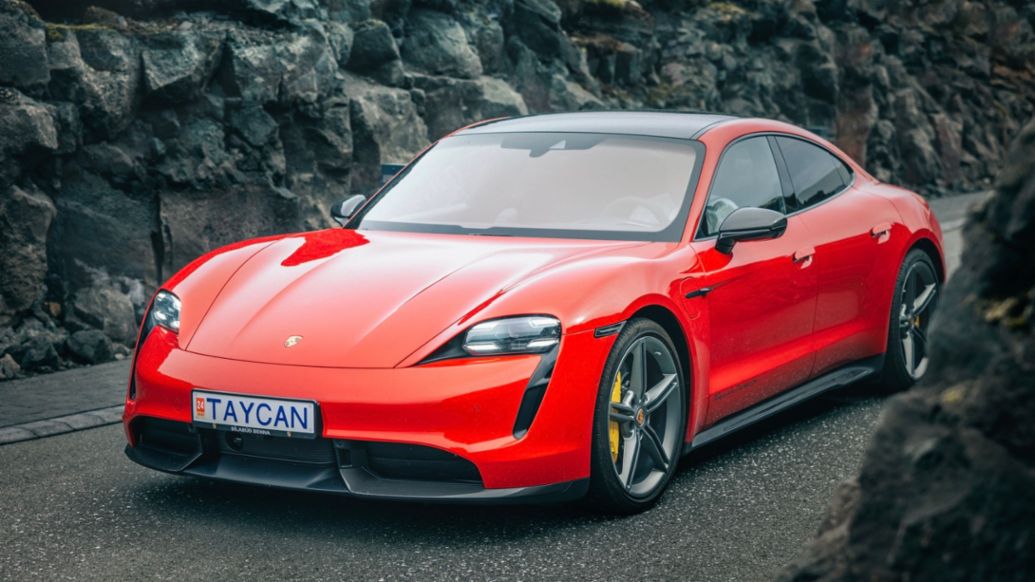
“Five years ago, when the Mission E concept was first unveiled in Frankfurt, a friend of mine pointed out that it would be a great car for Iceland,” he says. Due to high import taxes, performance cars can cost almost twice as much as they do in Europe, but hybrids and fully electric vehicles are exempted. “So I went to the local Porsche dealer,” Pétursson remembers with a smile, “and put my order in for a Mission E. He said I couldn’t order such a thing, but now my name was on the top of the list. So I waited another four years, following all the developments in the media, and eventually seeing pictures of test cars being driven. I was really pleased with how it looked.”
In May 2020, Pétursson’s own car touched down in Iceland, a Carmine Red Taycan Turbo S with the numberplate ‘Taycan’, which immediately became his daily driver. Even his first drive home caused a stir. “Right after I picked it up my son called, shouting “You’ve been snapped, you’ve been snapped!” down the phone. At first I thought he must have been talking about a speed trap, but the car was already all over social media. For the first few weeks it was an internet celebrity in Iceland.”
Now that the clamour has died down a little, Pétursson can enjoy driving his new car amid the serenity offered by Iceland’s quiet and unhurried road network. His Sunday Drive is one he makes quite often, and is used as a reliable means to unwind after a long week on the lecture circuit.
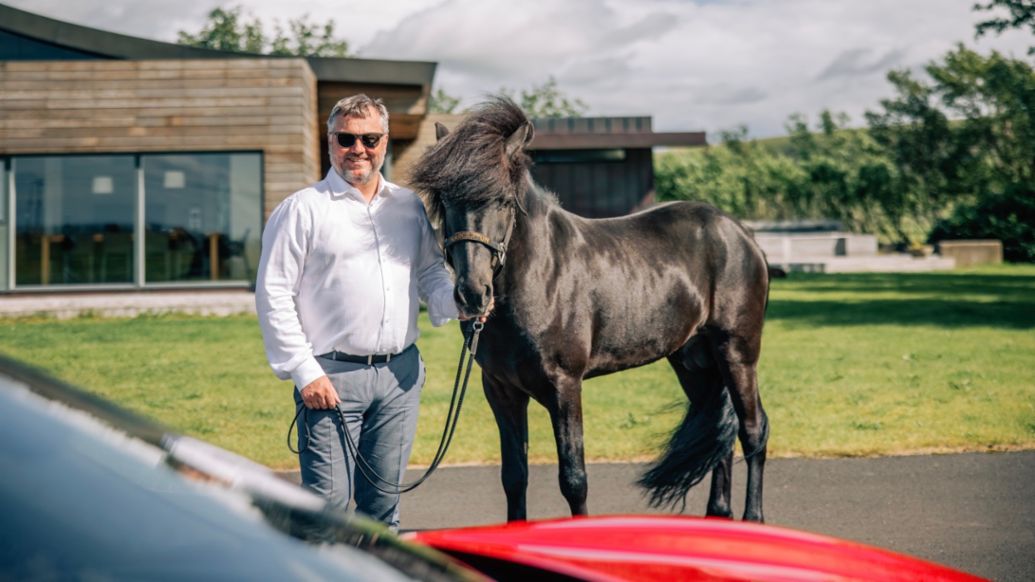
“I lecture all over the world so this route starts at the airport, in Keflavik, where I often land on a Friday afternoon after a week away. I’ll be heading straight from there to the farm we own on the south coast, where we breed horses. So it’s not your typical Sunday drive, but it’s a very nice one all the same, and a great way for me to relax at the end of the week when I get back to Iceland.”
Pétursson knows this road from childhood, when his father, who was born in the village of Hafnir, near Keflavik, used to drive it with the family to meet up with old friends. In those days it was entirely gravel and a popular spot for rallying, but today it is fully paved and runs around much of the island’s southern peninsular.
Area comprised of black volcanic lava and fringed by wild seas
The route from Keflavik airport heads south on the 425 past Hafnir towards the most south-westerly tip of Iceland. It pays to take a small detour on the 443 to the Reykjanesviti lighthouse, to explore the cliffs and Gunnuhver geysers before turning east on the 425 to Grindavik, a few kilometres from the famous Blue Lagoon. From there, the road continues along the 427 – known as the Sudurstrandarvegur or south coast road. It’s an area comprised of black volcanic lava, fringed by wild seas to one side and high mountains on the other. The route is punctuated by geysers, abundant with sea birds and is currently enjoying the added drama of a recently erupted and still highly active volcano at Fagradalsfjall.
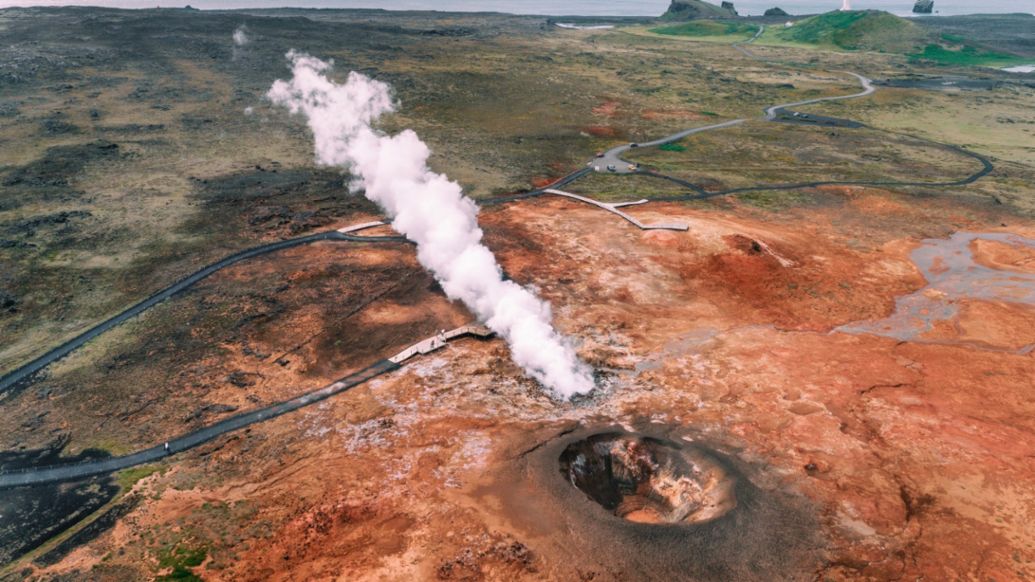
The coast road ends in the village of Thorlakshöfn, but Pétursson’s journey takes him a little further east and inland a few kilometres to his weekend retreat. “My farm is in Hvolsvöllur, which is quite a long way east, so taking the south coast road is by no means the fastest route. But that’s what makes it the perfect way to start the weekend. The plane usually lands late afternoon and it’s much more relaxing to take the long way home. The reason they paved this road is because the main road across the island goes over a pass, and during the winter this sometimes has to close. But this means the south coast road isn’t used much throughout the year, so it’s really quiet.”
Embracing the solitude of the unspoiled environment
As someone with a great deal of experience driving his own 911 Turbo in the Swiss Alps, where he lived for eight years, Pétursson is keen to stress that this road is not about the big elevation changes or challenging corners beloved of many Porsche owners. It’s more about getting out into a wild, remote landscape and simply embracing the solitude and immensity of this unspoiled and otherworldly environment. “The scenery is stunning,” he says, “with the road surrounded by this black landscape of ancient lava. During the Apollo space programme in the 1960s and 1970s, NASA came to this area to test the moon buggies, and no wonder. But most of time you are the only person around.”
The route from Keflavik along the south coast road to Hvolsvöllur is 180 km and takes Pétursson around two hours, but he recommends a coffee break after 43 km at Grindavik harbour before continuing east on 427. Another short detour he likes to take runs through the Reykjanesfólkvangur nature reserve, down the 42 and past Kleifarvatn lake and the geothermal springs at Krýsuvík.
Realising a dream with two Swiss colleagues
Despite his zen-like approach to driving in his native Iceland, Pétursson has not lost his love of the internal combustion engine and is currently in the process of realising a dream with two Swiss colleagues. “The three of us just finished a book on Fixed Restorations in, which was published this summer,” he says. “To reward ourselves we’ve ordered a new 911 GT3 Touring. You don’t make a lot from writing a book like that, but we decided between us to open a ‘GT3 bank account’, and any royalties we do receive will go straight into it.”
And how will he get his fair share of driving miles from his home in Iceland, some 2,600 km away? The jet-setting Pétursson has it all figured out: “I’m also a professor at the University of Geneva, so we have agreed we will keep the car in Switzerland. Usefully close to those alpine passes!”
Sunday Drives
With travel restrictions limiting the opportunities for road-trips, Porsche Newsroom’s new Sunday Drives series sets out to quench readers’ thirst for adventure by discovering the world’s most beautiful driving roads through the eyes of Porsche people around the globe.
